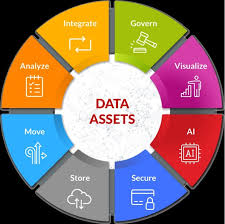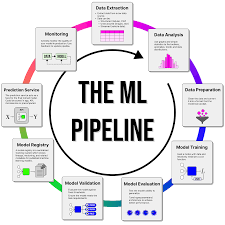comprehensive guide to Data Management Principles in Machine Learning 2024

Data is the foundation of any Machine Learning (ML) system. Effective data management ensures that ML models are accurate, reliable, and ethical. Without a structured approach to handling data, organizations risk inefficiencies, inaccuracies, and compliance violations.
In this blog, we will explore core data management principles, including data as an asset, data reliability, compliance challenges, and ML pipeline sensitivity.
1. Data and ML Pipelines

ML systems function as data processing pipelines designed to extract insights. These pipelines differ from traditional data processing systems due to:
- Complex constraints: ML models depend on data structure, performance, accuracy, and reliability.
- Challenges in measuring success: Unlike simple log-processing systems, ML models fail in unpredictable ways.
- Data dependency: The quality and volume of data heavily influence model performance.
🔹 Key Components of ML Data Pipelines
- Data ingestion – Collecting data from multiple sources.
- Data transformation – Cleaning, filtering, and formatting data.
- Model training – Using data to build ML models.
- Model evaluation – Ensuring accuracy and reliability.
- Deployment & monitoring – Checking real-world performance.
🔹 Example: In a recommendation system (like Netflix), data freshness and accuracy impact how well the model predicts user preferences.
2. Data as an Asset

Data is the most valuable component of an ML system. More and higher-quality data often leads to better models.
Why Data is an Asset:
✅ Improves model accuracy – More training data can outperform complex ML models.
✅ Drives business success – Companies like Netflix and Google use massive datasets to personalize user experiences.
✅ Enables AI-powered automation – More data-driven insights lead to smarter decision-making.
🔹 Example: Google’s search engine continuously learns from user queries, refining results over time to provide more accurate answers.
3. Data as a Liability

While data is an asset, poorly managed data can become a liability.
A. Legal & Compliance Risks
- Data must be collected legally and in compliance with privacy laws such as GDPR, CCPA, and HIPAA.
- Some regulations prohibit collecting personally identifiable information (PII) without consent.
- Users have the right to request data deletion.
🔹 Example: Facebook faced billion-dollar fines for mishandling user data and violating privacy laws.
B. Security Risks
- Internal threats: Employees should not access sensitive user data without logging their actions.
- External threats: Cyberattacks can expose data, leading to financial and reputational damage.
🔹 Best Practice: Use pseudonymization – replacing private identifiers with reversible placeholders, restricting direct access.
C. Data Storage & Deletion Challenges
- Storing unnecessary or duplicate data increases security risks.
- Proper deletion is difficult – data backups and metadata may still contain sensitive information.
🔹 Example: Deleting files on a computer doesn’t erase them completely. Hard drives often retain data fragments.
4. The Sensitivity of ML Pipelines to Data

ML pipelines are highly sensitive to data quality, volume, and distribution changes.
Challenges in ML Data Sensitivity:
- Data distribution shifts – Even small data inconsistencies can significantly impact model predictions.
- Missing data issues – If data from a particular region, demographic, or timeframe is lost, the model may misinterpret real-world trends.
- Bias in model learning – If important subsets of data are missing, the ML system may learn incorrect correlations.
🔹 Example: If a fraud detection system loses December 31 transactions, it may fail to detect New Year’s Eve purchase fraud.
Best Practices for Handling Data Sensitivity
✅ Monitor data consistency: Track changes in dataset distributions.
✅ Use automated alerts: Detect missing data patterns in real-time.
✅ Ensure balanced datasets: Include diverse and representative data points.
5. Data Reliability: Ensuring Consistency in ML Systems
For ML pipelines to function efficiently, data must be reliable, durable, and accessible.
Key Aspects of Data Reliability
| Factor | Definition | Importance |
|---|---|---|
| Durability | Ensuring data is not lost over time. | Prevents missing training data. |
| Consistency | Data remains the same across copies. | Avoids version conflicts. |
| Version Control | Tracking changes in datasets. | Helps rollback to earlier data versions. |
| Performance | Data is read quickly for ML models. | Avoids training delays. |
| Availability | Data is ready to be accessed anytime. | Prevents downtime in ML applications. |
🔹 Example: In an autonomous vehicle system, if sensor data is inconsistent, the AI might make incorrect driving decisions.
Best Practices for Ensuring Data Reliability
✅ Use distributed storage systems like AWS S3, Google Cloud Storage.
✅ Implement data validation to detect corrupt or missing data.
✅ Maintain backup copies of training datasets.
Final Thoughts: The Importance of Data Management in ML
Managing data effectively is crucial for the success of ML systems. Organizations must balance data collection with security, reliability, and compliance.
Key Takeaways
✔ More data doesn’t always mean better models – quality matters more.
✔ Legal compliance is critical – violating privacy laws can lead to massive fines.
✔ ML models are highly sensitive to data shifts – monitoring is essential.
✔ Reliable data is the backbone of ML pipelines – invest in proper storage, validation, and tracking.
💡 What challenges have you faced in managing data for ML projects? Let us know in the comments! 🚀